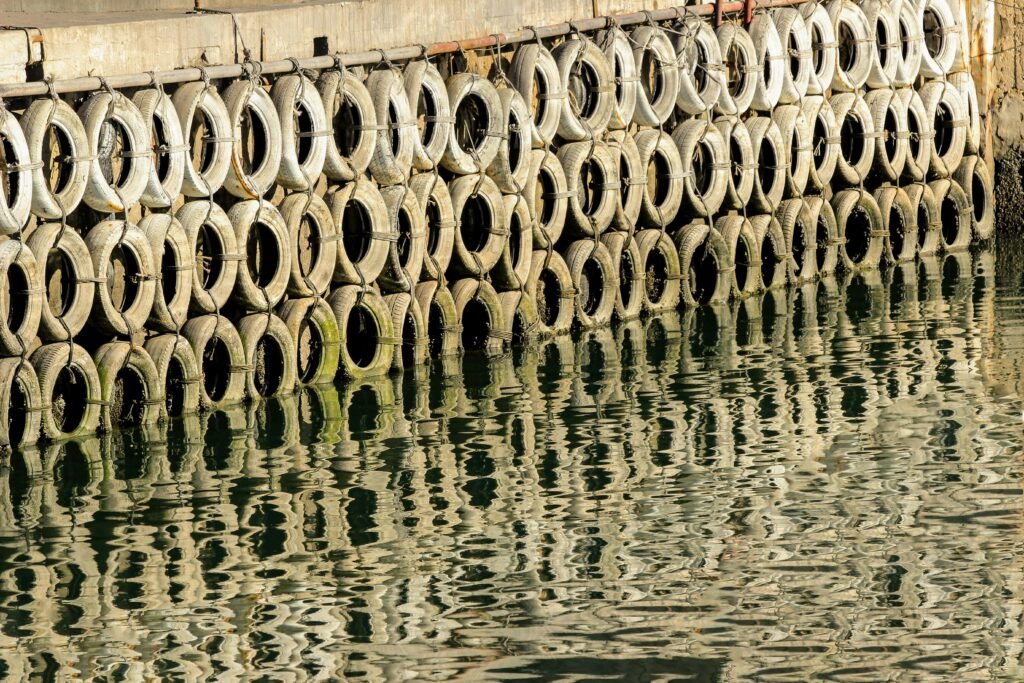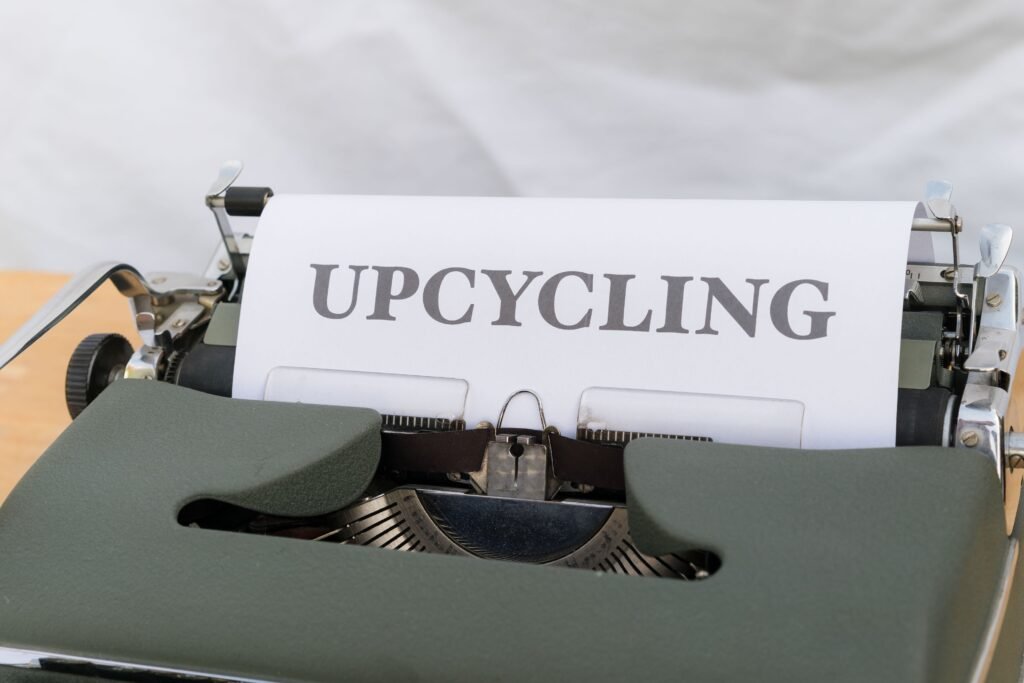Imagine transforming your collection of old, unused wooden crates into charming garden planters that will breathe life into your outdoor space. In this DIY guide, we will walk you through the step-by-step process of upcycling these crates, showcasing how simple it can be to create beautiful and sustainable planters. Whether you are a seasoned gardener or just starting, this article will provide you with all the information you need to bring a unique touch to your garden while reducing waste. Get ready to unleash your creativity and turn those forgotten crates into a thriving garden oasis.
Choosing the Right Crate
Crate size and shape
When it comes to choosing the right crate for your garden, size and shape are important factors to consider. The size of the crate will determine how many plants you can fit in it, so be sure to choose one that is spacious enough for your gardening needs. Additionally, consider the shape of the crate. Rectangular crates are versatile and can be placed against walls or fences, while square crates are perfect for creating a centerpiece in your garden.
Crate material
The material of the crate is another crucial aspect to think about. Wooden crates are a popular choice for upcycled garden planters as they provide a rustic and natural look. However, you can also opt for plastic or metal crates if you prefer a more modern or industrial aesthetic. Ultimately, the material you choose should be sturdy and durable, capable of withstanding the elements and supporting the weight of the plants.
Crate condition
Before starting your upcycled crate garden project, it’s essential to assess the condition of the crate. Inspect it for any signs of damage, such as rot or splintering. Ensure that the crate is structurally sound and free from any harmful substances that could potentially affect the health of your plants. If necessary, make any repairs or modifications to ensure the crate is in optimal condition for your garden.
Preparing the Crate
Cleaning the crate
Before you begin planting, it’s crucial to clean the crate thoroughly. Remove any dirt or debris from both the interior and exterior of the crate. Use a brush or a damp cloth to gently scrub away any grime. If there are any stubborn stains or residues, you can use a mild detergent or vinegar solution to dissolve and remove them. Once the crate is clean, rinse it with water and allow it to dry completely before proceeding to the next step.
Sanding and refinishing
If the crate’s surface is rough or splintered, sanding and refinishing it will provide a smoother and more polished look. Use sandpaper to sand down the rough areas, paying attention to corners and edges. Once the surface is smooth, you can apply a coat of varnish or paint to protect the wood and enhance its appearance. Choose a stain or paint color that complements your garden’s aesthetic and allows the crate to blend in seamlessly.
Optional: adding drainage holes
While not always necessary, adding drainage holes to your crate can help prevent waterlogged soil and potential root rot. Using a drill or a hammer and nails, create several evenly spaced holes at the bottom of the crate. These holes will allow excess water to drain out, ensuring proper moisture levels for your plants. However, be mindful of the size and number of drainage holes to avoid excessive water loss or instability in the crate’s structure.

This image is property of images.pexels.com.
Choosing the Plants
Consider the space
Before selecting the plants for your upcycled crate garden, it’s essential to consider the available space and environmental conditions. Take note of the crate’s dimensions and think about how much sunlight it receives throughout the day. Additionally, consider any potential height limitations or restrictions imposed by surrounding structures. By considering these factors, you can ensure that the plants you choose will thrive in your crate garden and complement its overall design.
Know your plants
When choosing plants for your crate garden, it’s important to know their individual needs and preferences. Some plants thrive in full sunlight, while others prefer shade. Take into account the amount of care and maintenance each plant requires. Consider the growth habits of different plants, such as tall and spiky plants that can add vertical interest or trailing plants that can cascade over the edges of the crate. By understanding the specific requirements of your chosen plants, you can create a harmonious and thriving garden.
Vertical or horizontal planting
Depending on the design and structure of your crate, you may have the option to plant vertically or horizontally. Vertical planting involves arranging plants in a stacked or tiered fashion, utilizing the height of the crate. This can be accomplished by using trellises, hanging baskets, or planters that can be attached to the crate. Horizontal planting, on the other hand, involves placing plants side by side in rows or clusters. Consider the size and shape of your crate to determine which approach will work best for your garden.
Preparing the Soil
Choosing the right soil
In order for your plants to thrive, it’s crucial to choose the right soil for your crate garden. Look for a well-draining potting mix that provides a balanced blend of nutrients. Avoid using regular garden soil, as it may not drain well in a confined space like a crate. Opt for a soil mix specifically formulated for container gardening, which typically contains a mixture of peat moss, perlite, and organic matter. This type of soil will promote healthy root growth and prevent waterlogging.
Adding organic matter
To further enrich the soil and provide essential nutrients for your plants, consider adding organic matter. Compost, well-rotted manure, or worm castings are excellent choices for improving the soil’s fertility and structure. These organic materials release nutrients slowly over time, promoting healthy plant growth and microbial activity in the soil. Mix the organic matter thoroughly into the potting mix before adding it to your crate, ensuring an even distribution throughout the planting area.
Fertilizing the soil
In addition to organic matter, fertilizing the soil is essential for sustaining the health and growth of your plants. Choose a slow-release or liquid fertilizer specifically formulated for container gardening. Follow the manufacturer’s instructions for application rates and frequency. Be mindful not to over-fertilize, as this can cause nutrient deficiencies or burn the roots of your plants. Regularly monitor the condition of your plants and adjust the fertilization schedule as needed based on their nutrient requirements.

This image is property of images.pexels.com.
Creating a Drainage Layer
Materials for drainage
Adding a drainage layer at the bottom of your crate will promote healthy root development and prevent waterlogging. One common material used for this purpose is gravel or small rocks. These provide space for excess water to collect, allowing it to drain away from the plant roots. Other materials that can be used include perlite, vermiculite, or even broken pottery shards. Choose a material that is readily available to you and suits the aesthetic of your crate garden.
Creating the drainage layer
To create the drainage layer, start by adding a thick layer of your chosen material to the bottom of your crate. Aim for a depth of approximately 1 to 2 inches, providing enough space for adequate drainage. Spread the material evenly and ensure that it covers the entire bottom surface. Once the drainage layer is in place, you can proceed with adding the soil mixture, making sure it is firmly pressed down but not compacted. This layered approach will ensure proper drainage and prevent waterlogging in your crate garden.
Planting the Garden
Arranging the plants
When it comes to arranging the plants in your crate garden, creativity and personal preference have no bounds. Consider the height, growth habits, and color schemes of your chosen plants. Place taller or more upright plants towards the back or center of the crate, while cascading or trailing plants can be positioned towards the edges. Experiment with different combinations and placement options to create an aesthetically pleasing arrangement that allows each plant to thrive.
Adding the soil
Once you have arranged your plants to your satisfaction, it’s time to add the soil. Take care to gently fill in the gaps between the plants, ensuring that the soil is evenly distributed and lightly packed around the root balls. Avoid compacting the soil too tightly, as this can impede root growth and drainage. Fill the crate with soil until it reaches approximately 1 to 2 inches below the rim, allowing space for watering without causing overflow.
Mulching the surface
Mulching the surface of your crate garden offers several benefits. Mulch helps to retain moisture, suppresses weed growth, and regulates the temperature of the soil. Choose a mulch material such as wood chips, straw, or shredded leaves. Apply a layer of mulch approximately 2 to 3 inches deep, ensuring that the base of each plant is exposed and not covered by the mulch. This layer acts as a protective barrier and provides a finished look to your crate garden.

This image is property of images.pexels.com.
Caring for Your Crate Garden
Watering
Proper watering is essential for the health and vitality of your crate garden. Monitor the moisture levels of the soil regularly, ensuring that it remains moist but not overly saturated. Use your finger or a moisture meter to gauge the soil’s moisture content before watering. Water the plants deeply, ensuring that the water reaches the root zone. Avoid watering from above, as this can splash soil onto the plants’ leaves and promote the growth of fungal diseases.
Pruning and trimming
Regular pruning and trimming are necessary to maintain the shape and health of your plants. Remove any dead or diseased leaves, branches, or flowers promptly to prevent the spread of pests or diseases. Trim back any overgrown or wayward branches to encourage the plants to grow in a compact and tidy manner. Pruning also promotes air circulation and allows for better light penetration, ensuring the overall health and vitality of your crate garden.
Fertilizing and pest control
To keep your crate garden thriving, fertilizing and pest control are essential. Follow a regular fertilization schedule using a balanced liquid fertilizer or slow-release granules. This will provide the necessary nutrients for healthy plant growth. Additionally, monitor your garden for any signs of pests or diseases. Take proactive measures such as applying organic pesticides or implementing natural pest control methods to protect your plants and maintain a pest-free environment.
Additional Ideas for Upcycled Crates
Crate herb garden
If you’re a fan of fresh herbs, consider transforming your upcycled crate into a herb garden. Choose a variety of culinary herbs such as basil, thyme, parsley, rosemary, and chives. Herbs are relatively easy to grow, require minimal space, and add a fragrant and flavorful touch to your culinary creations. Label each herb using small plant markers or decorative tags to create an organized and visually appealing herb garden in your crate.
Crate flower display
Creating a vibrant and colorful flower display in your upcycled crate can add a charming and eye-catching element to your garden. Choose a selection of annual flowers with various bloom times and complementary colors. Consider incorporating trailing or cascading flowers to add depth and visual interest. Arrange the flowers in your crate, being mindful of their height and growth habits. With proper care and maintenance, your crate flower display will be a beautiful focal point that blooms throughout the season.
Crate vegetable garden
If you have limited space or poor soil quality, a crate vegetable garden provides an excellent solution. Choose vegetables that are suited for container gardening, such as tomatoes, lettuce, peppers, or herbs like basil and cilantro. Arrange the vegetable plants in your crate, leaving enough space for them to grow and spread. Ensure they receive adequate sunlight and water regularly. With proper care and attention, your crate vegetable garden can provide fresh and homegrown produce right at your fingertips.
Creative Ways to Decorate Your Crate
Painting the crate
To add a personal touch and enhance the visual appeal of your crate garden, consider painting it. Choose a color that complements your garden’s aesthetic or matches your outdoor décor. Use outdoor-friendly paint that is specifically formulated for wood or plastic. Apply multiple coats for a more vibrant color, allowing each coat to dry completely before adding the next. Painting your crate will not only protect it from weathering but also create a customized look that reflects your style.
Stenciling or decoupaging
For a more intricate and artistic approach to decorating your crate, consider stenciling or decoupaging it. Stencils allow you to create patterns or designs on the crate using paint or a wood burning tool. Alternatively, you can decoupage the crate by gluing decorative papers, fabric, or images onto its surface. This technique adds texture and visual interest, transforming your crate into a unique and eye-catching piece in your garden.
Adding decorative elements
To further enhance the aesthetic appeal of your crate garden, consider adding decorative elements. Hang small lanterns, fairy lights, or wind chimes from the crate’s handles or sides to create a whimsical and inviting atmosphere. You can also attach small garden ornaments, such as figurines or colorful ceramic tiles, to the crate. These decorative touches will personalize your crate garden and make it truly unique.
Tips for Successful Upcycled Crate Gardens
Start small
If you’re new to crate gardening or have limited space, it’s wise to start with a smaller crate and a few plants. This will allow you to gain experience and observe how your plants respond to the conditions in your garden. As you become more confident and familiar with crate gardening, you can gradually expand your garden and experiment with different plant combinations.
Consider sunlight and shade
Proper placement of your crate garden is crucial for the success of your plants. Before deciding on the crate’s location, assess the amount of sunlight and shade it will receive throughout the day. Different plants have different light requirements, so it’s important to choose a location that suits the needs of your chosen plants. If your crate garden receives partial shade, opt for shade-tolerant plants that can thrive in such conditions.
Monitor moisture levels
The moisture levels in the soil of your crate garden can greatly impact the health and growth of your plants. Keep an eye on the moisture content by regularly checking the soil’s dampness. Adjust your watering schedule accordingly to ensure that the plants receive adequate moisture without becoming waterlogged. Pay attention to any signs of overwatering or underwatering, such as wilting or yellowing leaves, and adjust your watering practices accordingly.



